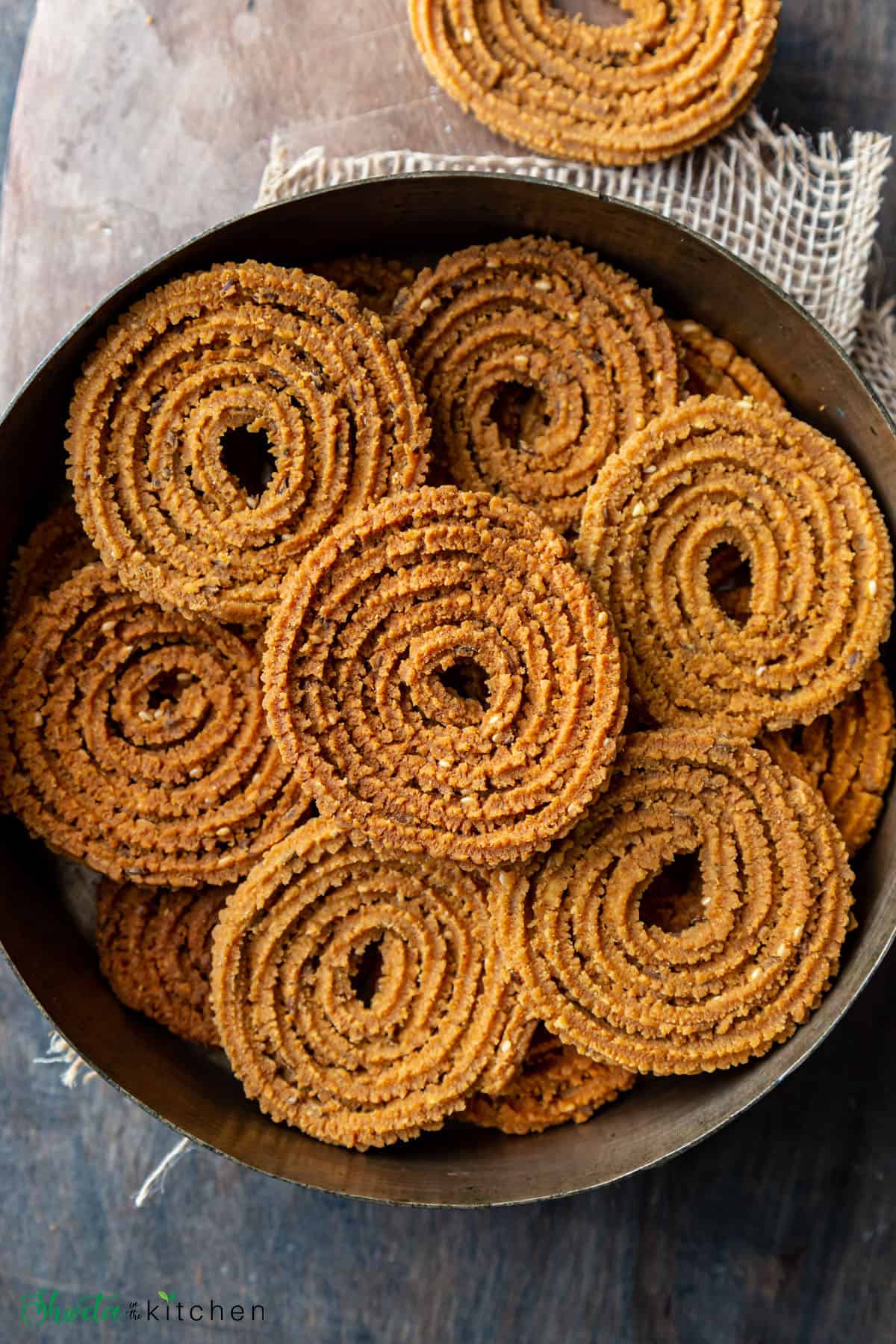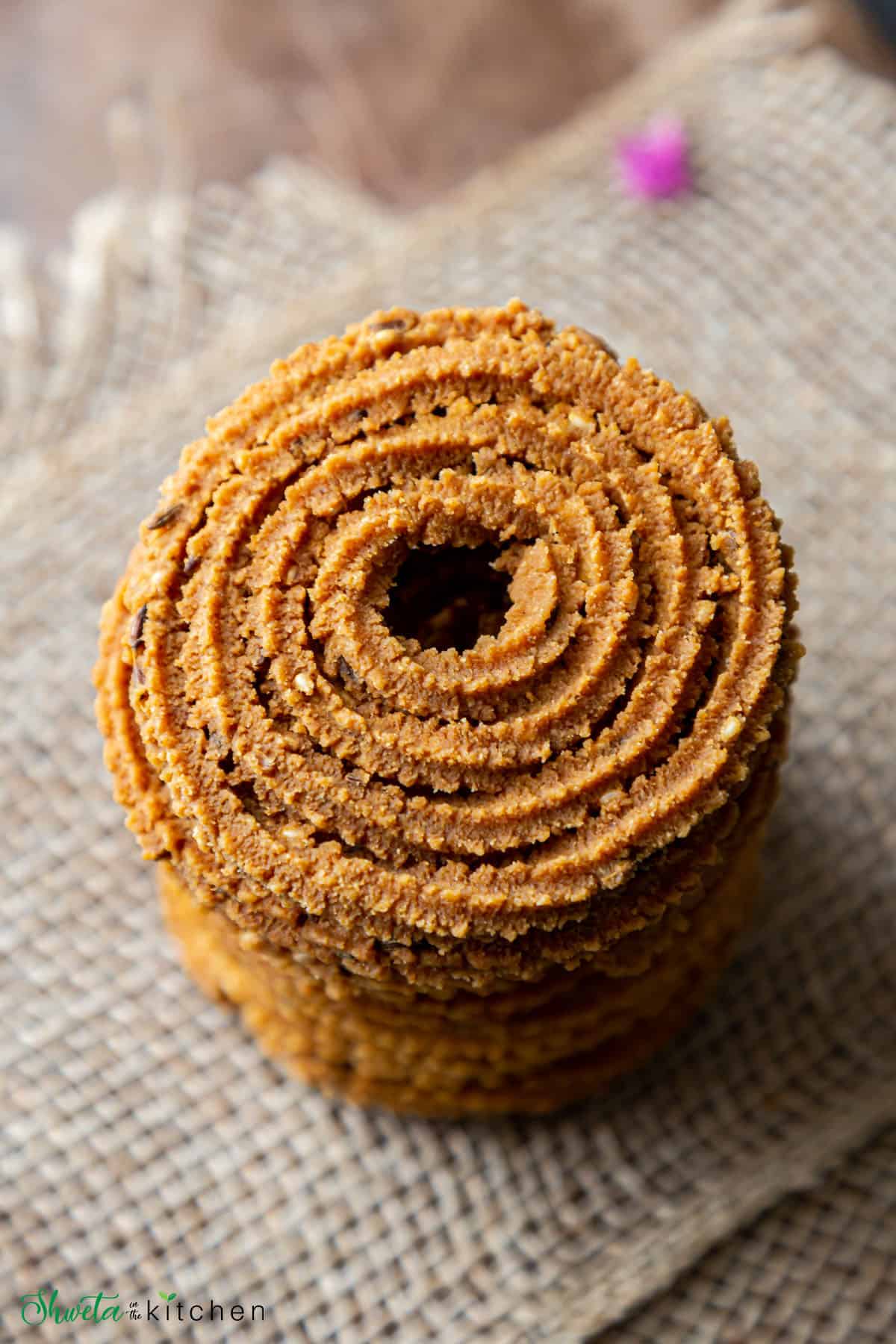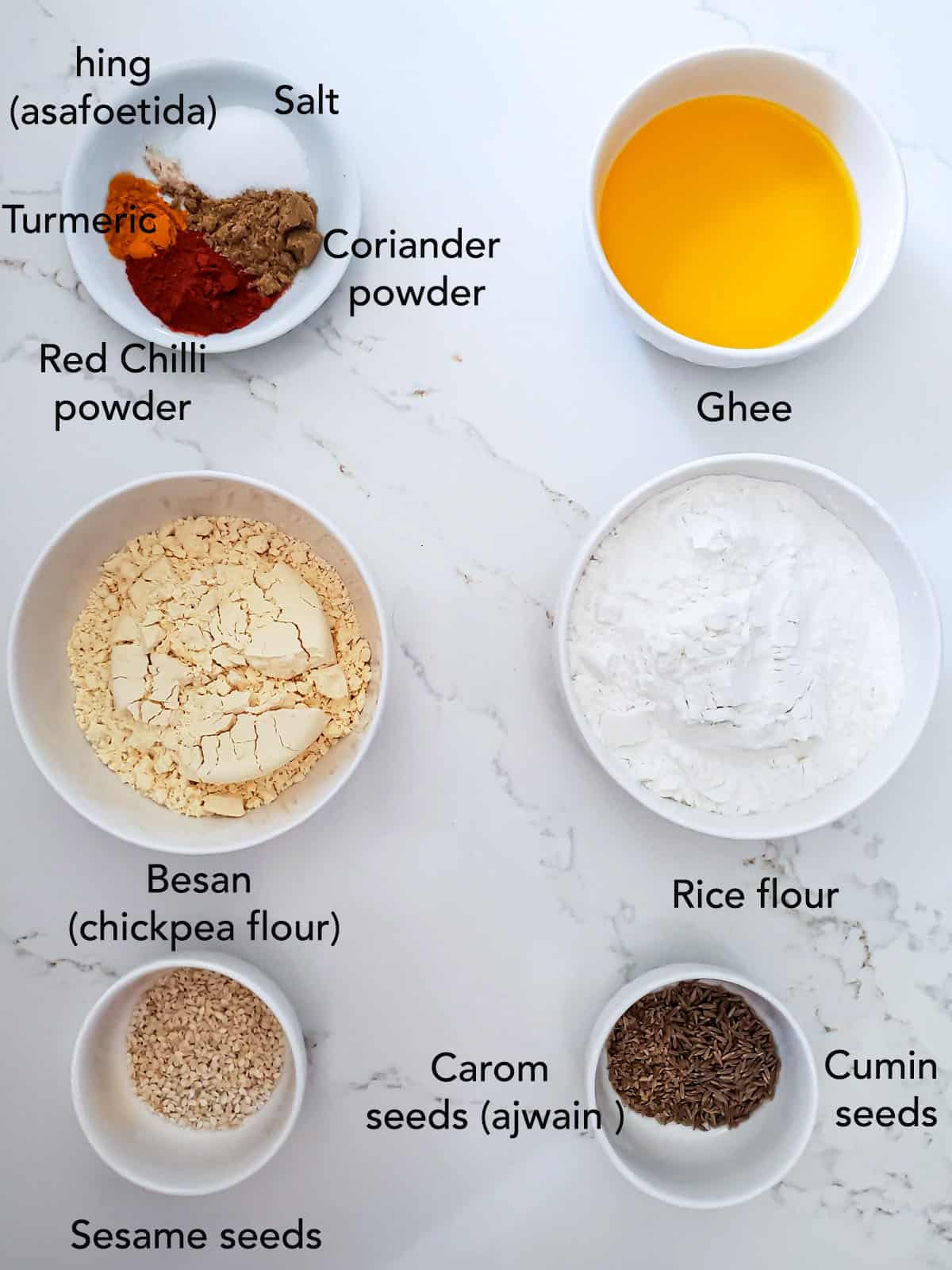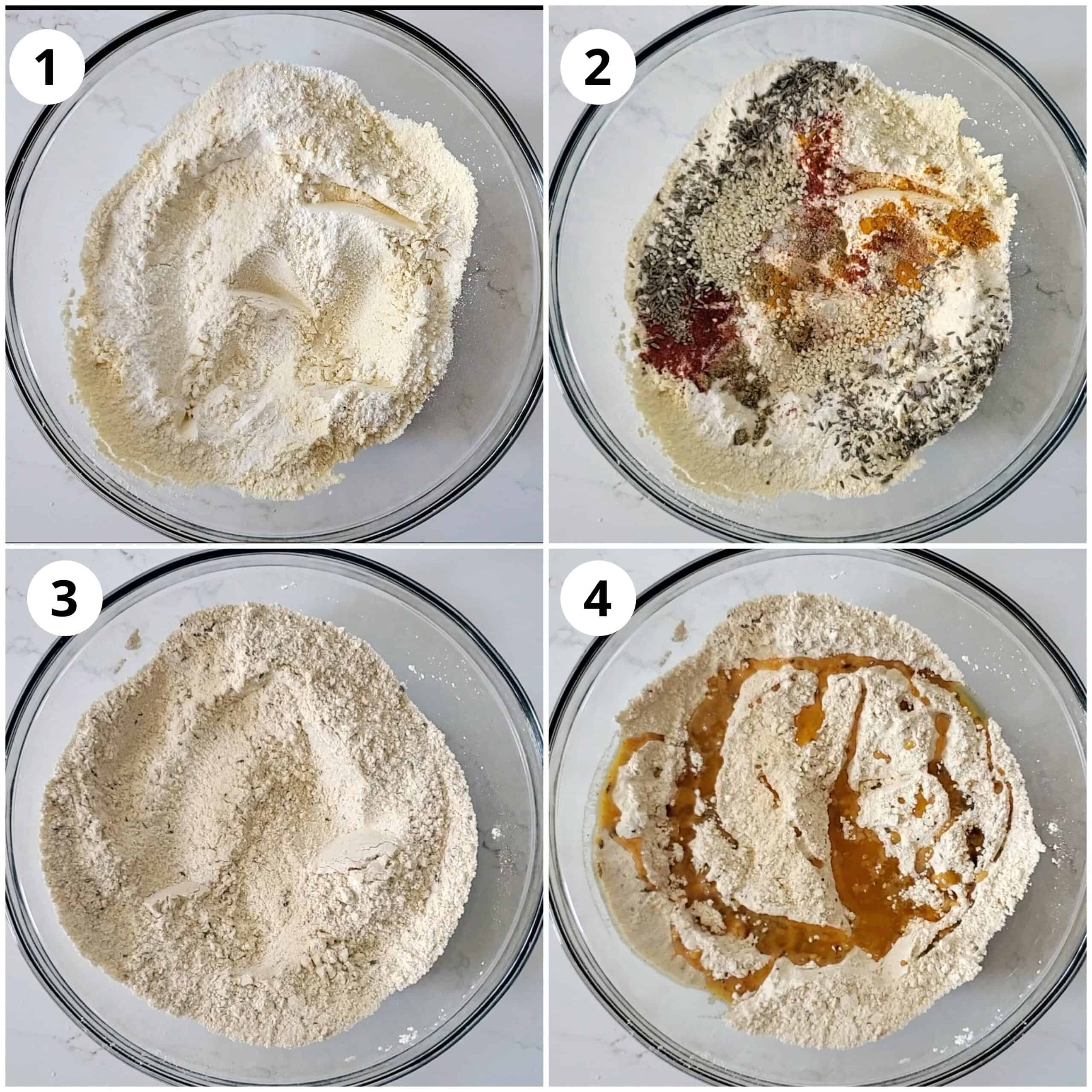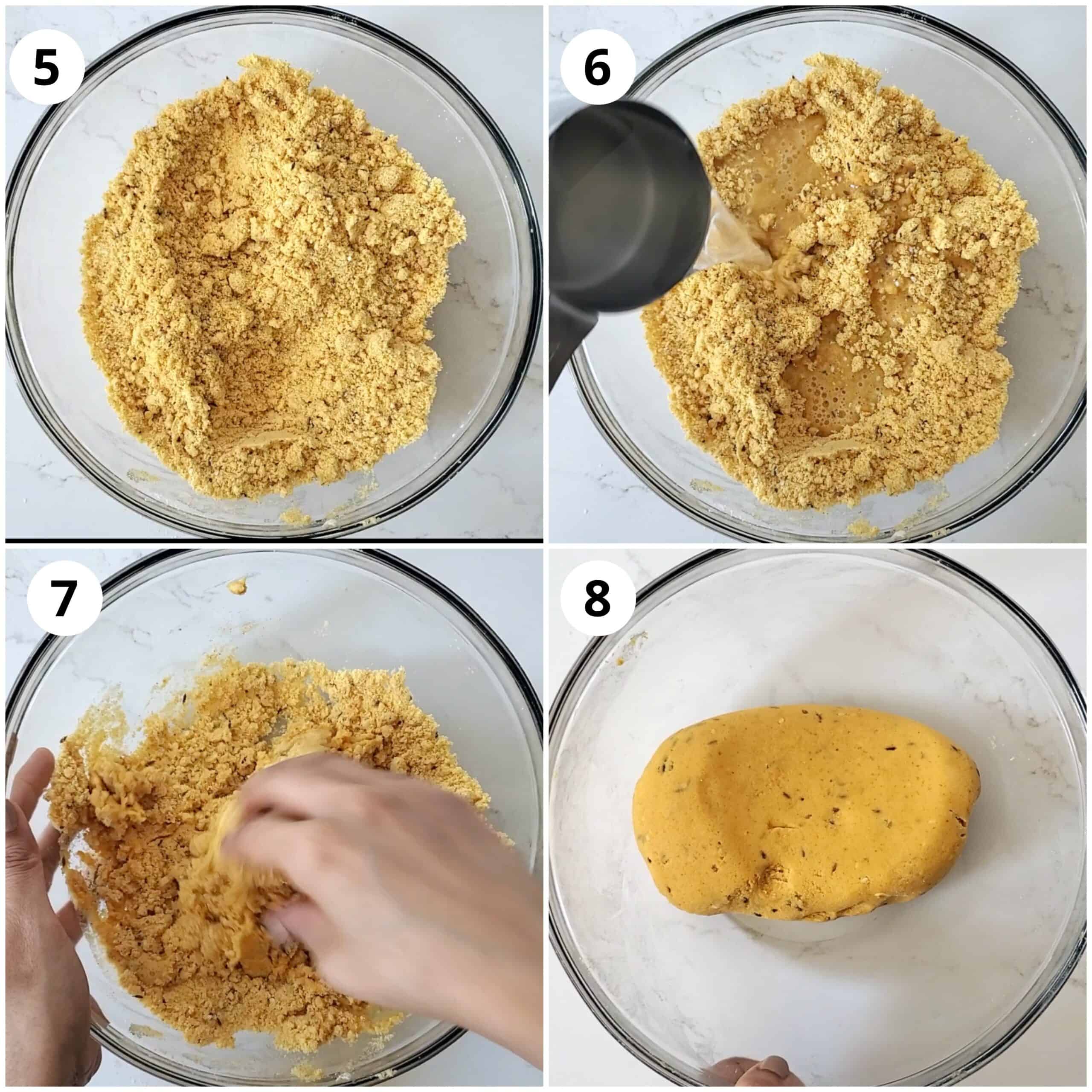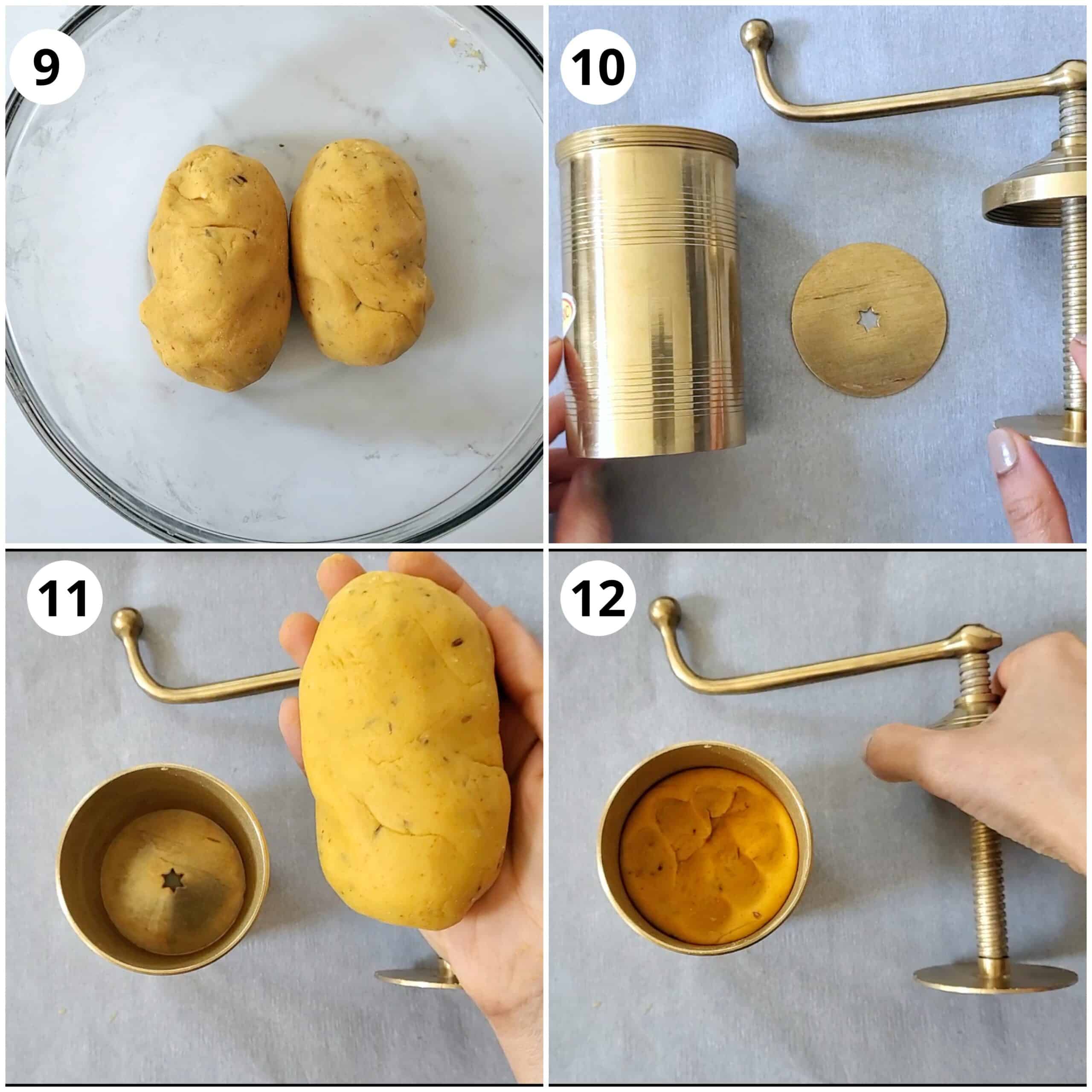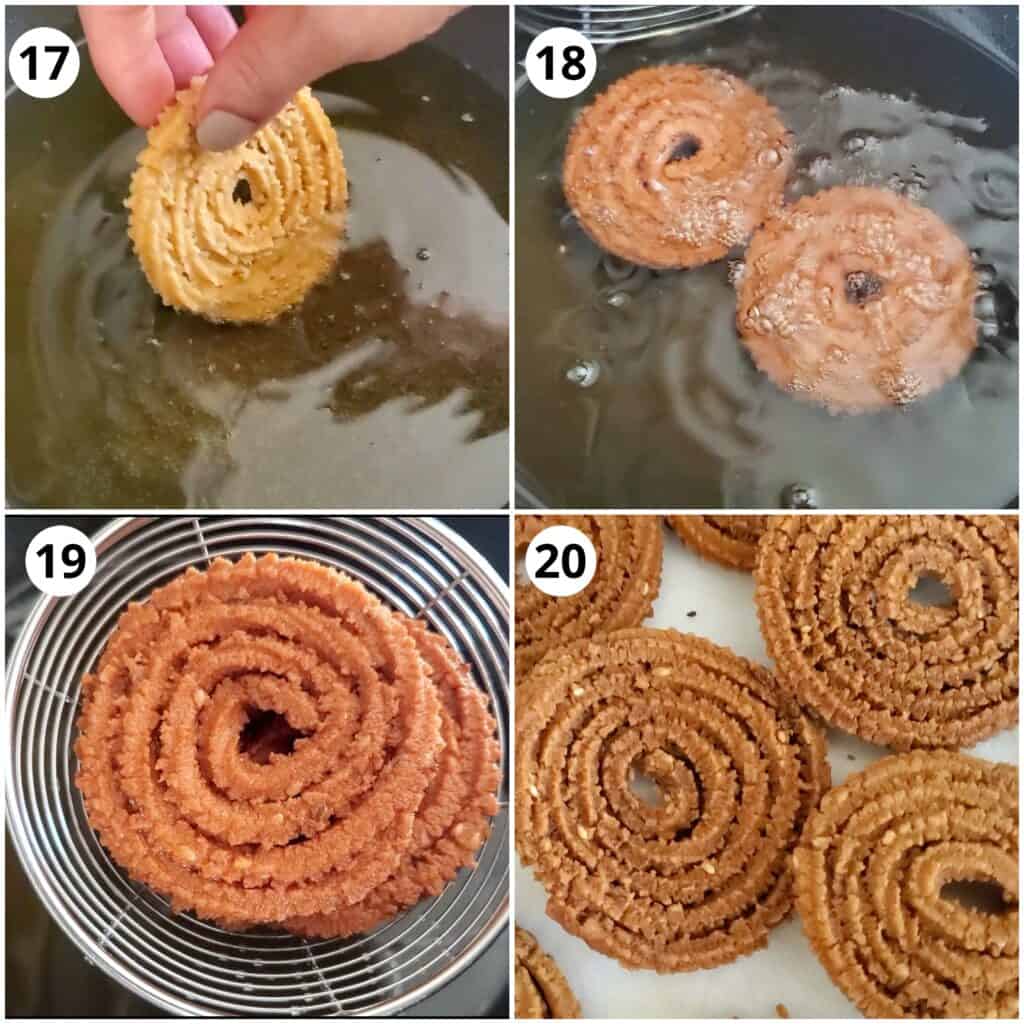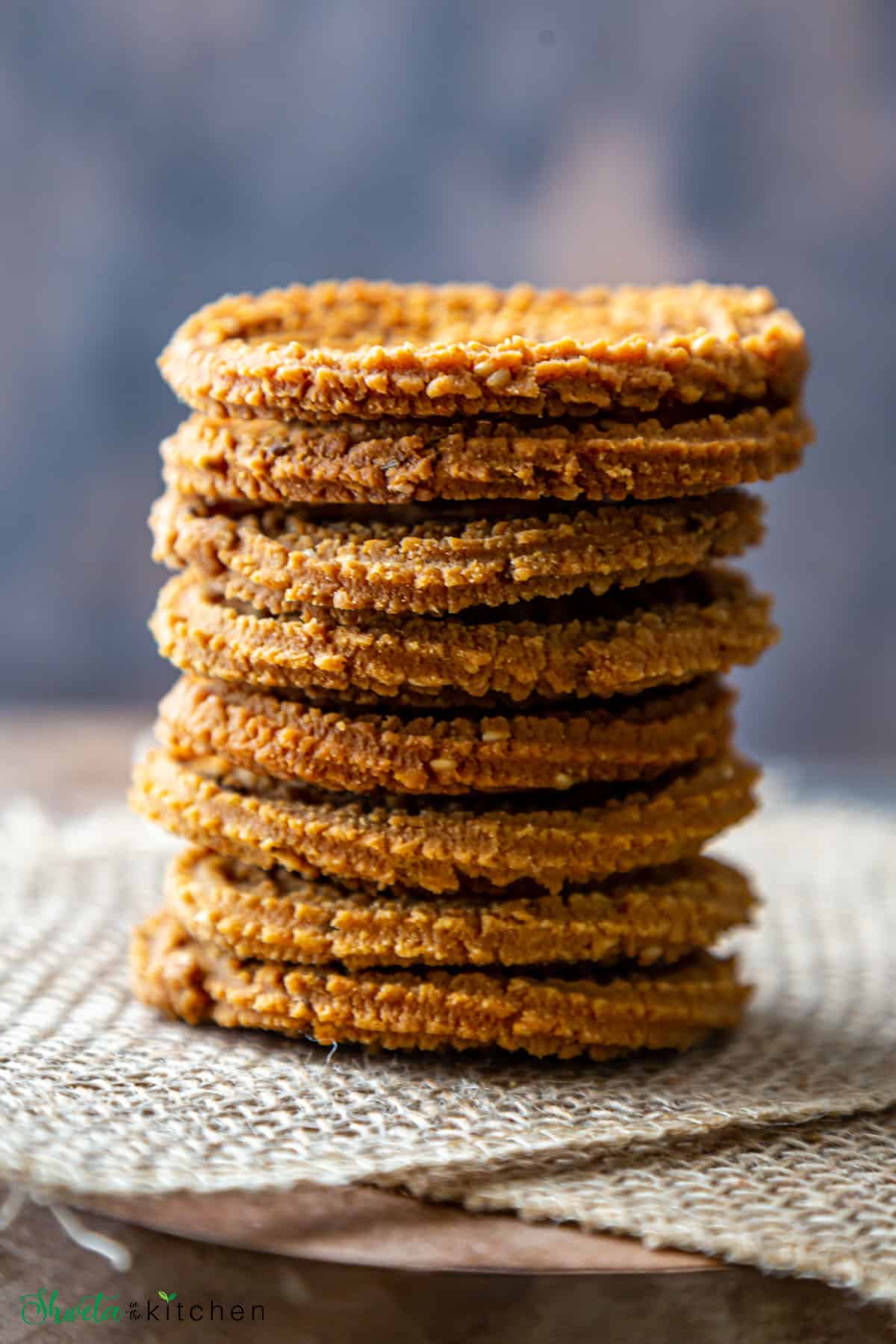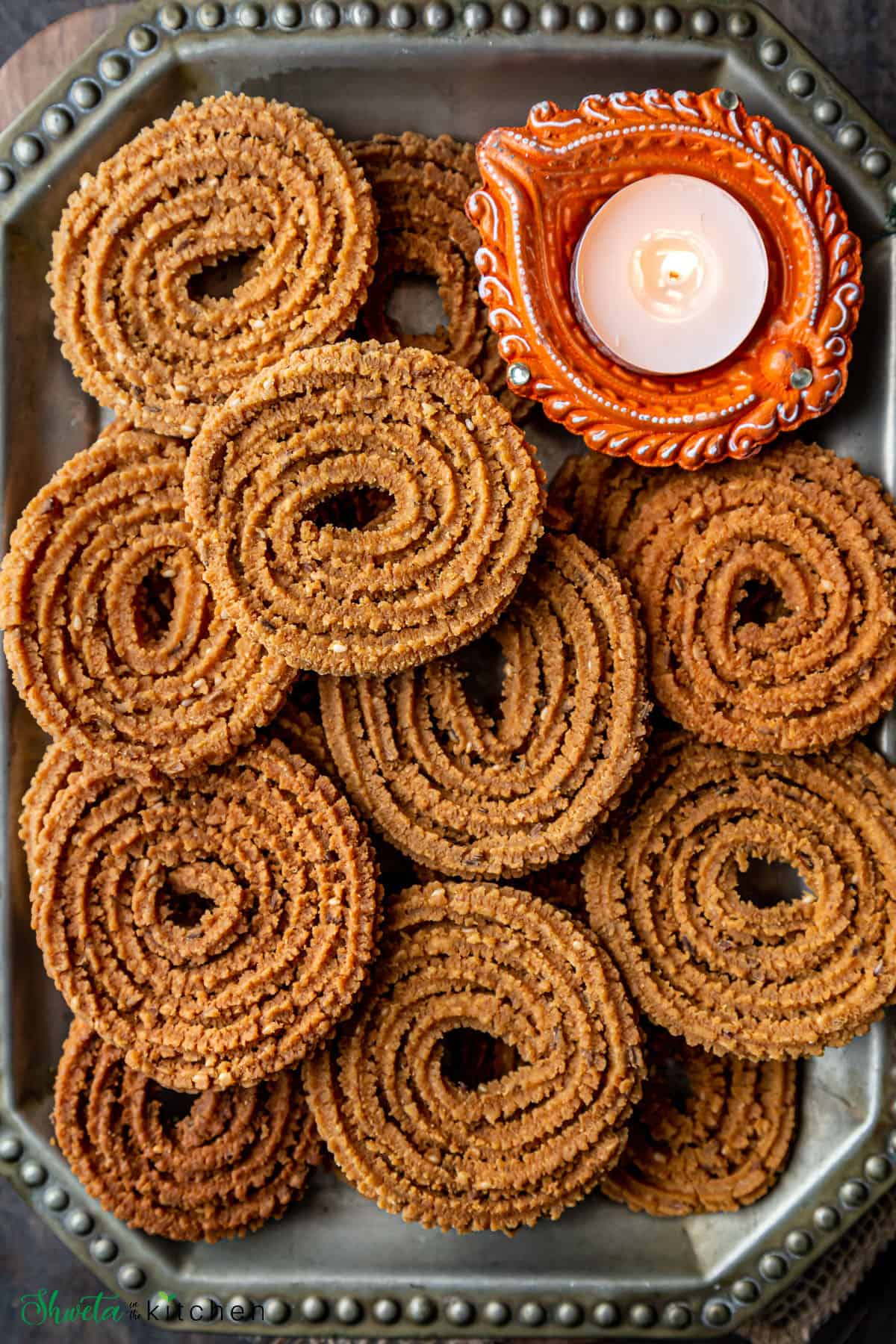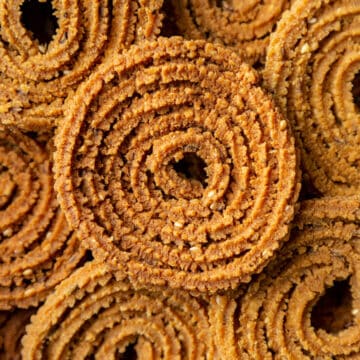Hope you enjoy this Chakli recipe!! If you give this recipe a try, please rate by clicking stars ⭐️ in the recipe card. Thank you ❤️ ! You can also follow me on Facebook | Instagram to see what’s cooking in my kitchen!!
I love these with my tea and they make such an excellent snack or a quick breakfast option.
In this post, I’m sharing how to make the instant chakli recipe without bhajani flour.
It is also known as Chakri in Hindi or Chakali in Marathi and Murukku in Southern India.
There are various types of chaklis based on the flour used like wheat flour chakli, jowar flour chakali, tandalachi chakli (rice flour chakali), and the classic bhajanichi chakli.
With time, my mom gradually started making the Instant chakli version which I’m sharing in today’s post.
The instant one takes away the additional steps of washing, drying, roasting, and grinding replacing it with ready to use flours (rice flour and besan) without any compromise in taste or texture.
To make or shape the chaklis, we will need a chakli press or chakali press. These are readily available in the Indian markets or online.
The recipe is as easy as mix the flours, spices, seeds, hot ghee, and make a dough using hot water.
Insert a portion of the dough into the chakali maker and then rotate the handle or press to make spirals.
These spirals are then deep fried until golden and drained to get crispy chakli.
They have a great shelf life so make these a few weeks in advance for Diwali!
2 and 3 - To it, add the spices (red chili powder, coriander powder, turmeric, hing (asafoetida), and salt) and seeds (carom seeds (ajwain), cumin seeds (zeera), and white sesame seeds (til)). Mix with a spoon (or spatula) to combine.
4. Heat ghee (or oil) on stove top or microwave and add to this dry mix.
5 -Incorporate the ghee(oil) into the flour using hands or spoon. It will form a crumbly texture and the color will change to orangish-yellow.
6 and 7 - Boil some water and use this hot water, some at a time knead a soft pliable dough. Used approximately half cup hot water.
8 - Rest for 5-10 mins by covering with a wet cloth. Don’t rest for too long as it may get dry.
10 - Take the chakli press and add the star disk to it so it’s flat and seals the bottom.
11 and 12 - Add one portion of the dough, press so it fits inside the tube. Close and tightly secure the lid/handle of the chakli maker.
Line a plate or baking sheet with parchment paper or cut individual parchment paper squares for each chakali. This makes transferring to oil easy.
13 - Press the chakli press to squeeze out the dough and then move in a circular motion to make spirals.
14 - Make about 4-5 spirals, close to each other for each chakli.
15 - Break the dough and seal the outside and inside edge (i.e start and end) to prevent them from opening while frying.
16 - Continue pressing the remaining chakalis in a similar manner. Keep them covered with a wet cloth to prevent drying. Makes 7-8 chaklis of 4-5 round each with one portion.
If it rises too fast then the oil is very hot and if it doesn’t then the oil needs to heat up more.
Line a baking tray or plate with paper towel and keep it ready.
17 - Add 1-2 pieces of chakali or as much the pan can hold without over crowding.
18 - Fry on medium-low heat until golden.
19 and 20 - Drain and then transfer on an on lined plate to drain excess oil. Keep frying the remaining chaklis in a similar manner.
Crispy and crunchy chaklis are ready!!
When stored right, they can easily last for weeks or even a month.
For those crispy and crunchy chaklis, add hot fats (oil, ghee or butter) to the dough and incorporate it in the flour before kneading. Don’t skip the seeds, they had a nice crunch and flavor. In addition, ajwain aids digestion too. For spicier chakali, add some more chili powder. Taste a small portion of the dough to check. Keep the dough and uncooked chaklis covered at all times with a wet cloth to prevent them from drying.
Shaping or making chaklis
Use a chakali maker or chakli press. I got mine from India but there are many varieties available online as well as in local Indian stores. Ensure the dough is soft and pliable. Don’t rest it for long. Less water will cause the chakali to break while piping. If this happens, add some water (a tablespoon at a time) and knead again and try. Too much moisture will cause the chakali to lose shape. If this happens, add some more rice flour a tablespoon at a time and try again. Making those perfect circles is not difficult at all and can be mastered with some practice. If you find it difficult to make spirals, make small 2-3 inch lines instead. These are known as tukda chakali and taste just the same just that these are bite-size and not round.
Frying:
Fry on medium to medium-low heat. Frying at a high temperature will cause the outside to brown quickly and the inside to remain uncooked resulting in unpleasant results like crunchy on out and soft inside. Similarly, frying at low temperatures will turn them hard not crispy. Always test the oil temperature before frying the next batch.
Recipe Card
